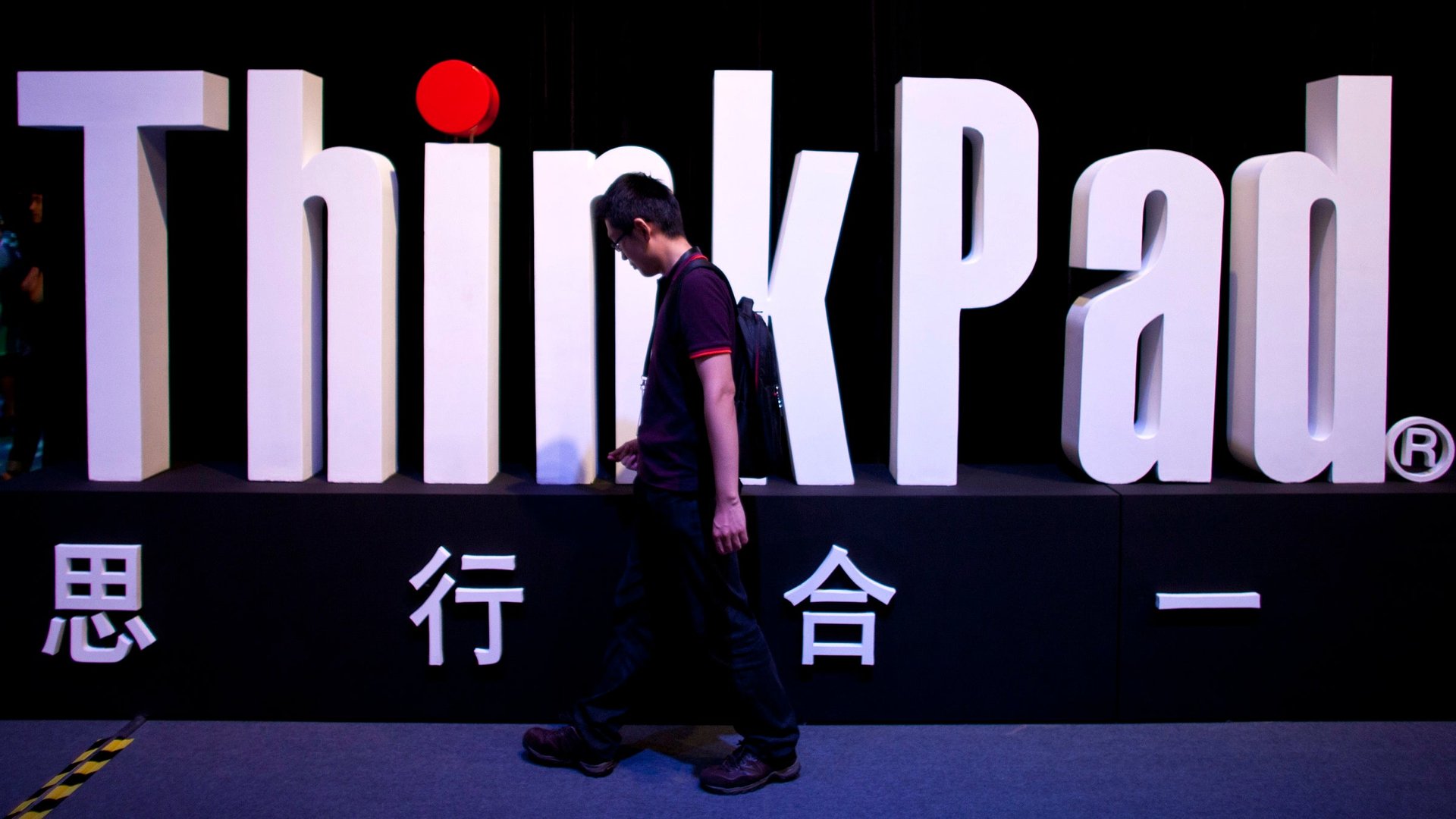In selling server unit to Lenovo, IBM would edge closer to not making any computers at all
IBM is in talks to sell a portion of its business that builds servers—those fast computers that live in data centers and power the internet—to Chinese PC manufacturer Lenovo, reports the Wall Street Journal. The report makes sense: In 2005, Lenovo acquired IBM’s PC manufacturing business, and remains the provider of some of the hardware that IBM sells through to clients.


IBM is in talks to sell a portion of its business that builds servers—those fast computers that live in data centers and power the internet—to Chinese PC manufacturer Lenovo, reports the Wall Street Journal. The report makes sense: In 2005, Lenovo acquired IBM’s PC manufacturing business, and remains the provider of some of the hardware that IBM sells through to clients.
A final sale price for this division of IBM could easily be in the billions of dollars, since this division of IBM’s server business, the “x86” servers based on the same Intel architecture in almost all PCs, produced about one-third of the company’s revenue in servers, or $4.9 billion, in 2012, estimates Morgan Stanley. Other servers IBM will continue to make include the pizza box-size Watson servers it recently announced, and its “System z” mainframes.
When you talk to just about any executive at IBM, they’ll emphasize that the company doesn’t sell computers, or software, or advice, even though, quite explicitly, all three are the whole of their business. Rather, they’ll tell you that IBM is in the “solutions” business. What this means for IBM’s business model is that as hardware has become commoditized, IBM has actively moved into software and consulting, while selling through whatever hardware is required to answer the customer’s needs. That hardware is now sometimes manufactured by IBM, and in some cases by other companies.
Given this strategy, it makes sense that IBM is selling off the lowest-end portion of its server business, which is rapidly becoming a commodity. That x86 server unit is facing competition from lean manufacturers and even competing chip architectures, like servers powered by the same ARM chips that predominate in smartphones. I’ve previously explained how IBM’s weak hardware business explains its future plans: 40% of IBM’s revenue and 60% of its profits come from software license fees and services contracts. Given the ongoing commoditization of hardware, the only way forward for the company is to continue to increase those percentages.
This isn’t a bad outcome for the company—revenue overall at IBM is basically flat year over year—but it does point to a future in which IBM, the once-great maker of ultra fast “big iron” computers, doesn’t make any hardware at all.